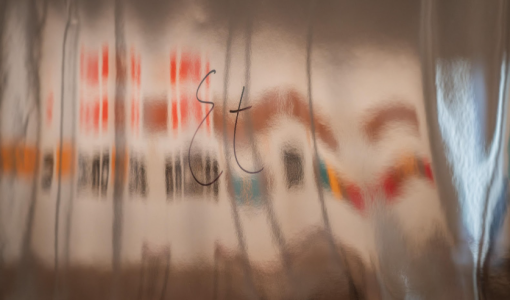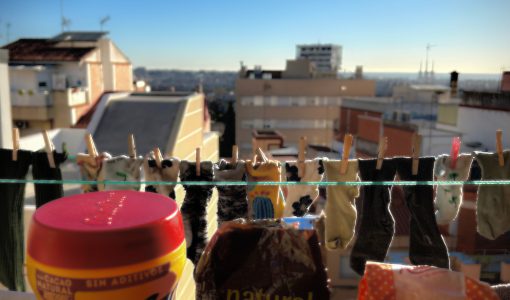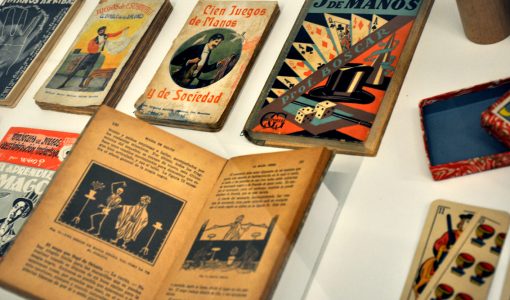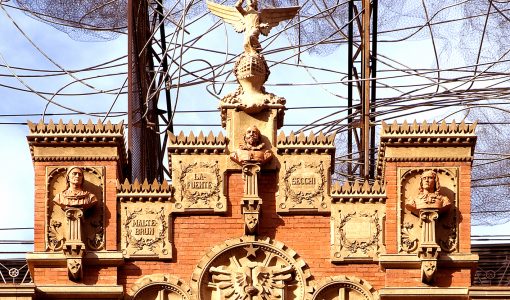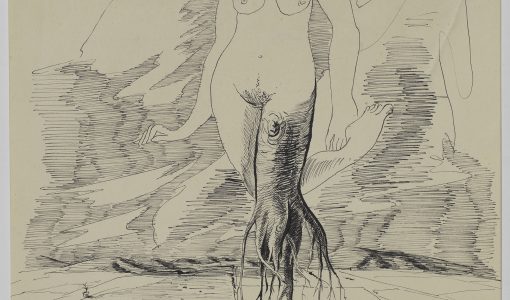Fernando Bryce
21.04.2005 – 10.07.2005

Fundació Antoni Tàpies presents the first exhibition devoted to the work of Fernando Bryce (Lima, 1965), an artist who works around memory from series of drawings that reproduce archive images and documents to provide a variety of historical narratives and non-linear visions of history that enable us to take a new look at the present.
At the end of the nineties, Bryce gave up painting and devoted himself entirely to drawing. He produced a work based on what he calls “the mimetic method of analysis”, i.e., an ink copy of a series of photographs, newspaper cuttings, advertisements, promotional publicity or popular propaganda, among other documents, taken from archives and libraries. At first his intention was to do an exercise on the history of power and the images of his own country, Peru, but his documentary archaeological research soon extended to decisive moments and historical figures of the 20th century, with a twofold purpose: to rescue documents and images deliberately forgotten by official history from the past and to anchor in the present events destined to be rapidly forgotten by the media structure of the people in power. In that way, Bryce’s work proposes a new look at history and reveals the univocal discourses of the reigning powers. He reclaims a new image by mechanically copying documents, statistical maps, bureaucratic reports and pamphlets, and at the same time makes the image a new kind of writing, a graphology that discloses a network of relations of a specific historical case.
Bryce creates thematic series which homogenise their sources and transforms them into black and white drawings almost always in the same format. That artistic strategy has a critical and ethical purpose. Despite the objectivity he imprints on his series, the literal transcription of the documents and images and the selection of material show what is hidden, whether by rescuing stories from oblivion or ironically unmasking the official discourses of power. For various reasons, the accumulation of images and the way Bryce arranges them synthetically parody and question the media and mass reproduction. In the face of the spread of unlimited reproduction and the way it is now divorced from history, steeped in a digital and technological context, the copying process through drawing documents that are out of circulation conjures up an aura and a sense of redemption in the style of Walter Benjamin, while becoming a search for a collective historical memory.
Fundació Antoni Tàpies is showing nine of the series of drawings: Walter Benjamin (2002) and Trotsky (2003) are devoted to the two intellectuals, whose critical thought marked the 20th century. The Walter Benjamin series is not only a tribute but also a declaration of intent in Bryce’s work: many of the quotations can be understood as dogmas or ideas present in his work. The Trotsky series, meanwhile, is a critical tribute to the man, while setting out to reveal a history which has been silenced and annihilated. The series The Spanish Revolution (2003) and The Spanish War (2003), and the series Revolución (2004) approach two crucial moments of social struggle spurred on by the utopian thought of the 20th century, the Spanish Civil War and the Cuban Revolution. In the series on the Spanish Civil War, Bryce is interested in the silenced or sidelined history of the most radical sectors, anarchists, anti-Stalinist communists (the POUM), who are differentiated from the Stalinist left or the left-wing socialists, and expresses it with a certain critical distance. Revolución, which takes its title from the first official Cuban newspaper, provides a critical view of the power relations between Latin America and the USA: it begins with the Cuban Revolution and then shows a number of events from the social and political movements of the 1960s. Visión de la pintura occidental (2002) ironically reflects a situation of cultural colonialism. The series is based on a museum of pictorial reproductions at the Universidad San Marcos in Lima, whose aim is to popularise art through the reproduction of works of art in offset. Visión de la pintura occidental is made up of photographs of some of those reproductions and a series of drawings that show the correspondence of the museum in the gestation of the project. The Fundació is also presenting three smaller series that apply mimetic analysis to a single document. Cuba (2002) and México (2002) reproduce tourist brochures from the 1950s, whilst Guatemala 54 (2002) refers to the CIA and United Fruit Company coup against the elected president Arbenz in 1954. The series Américas (2005) takes its title from the magazine of the Organisation of American States (OAS), and reproduces pages from copies from the 50s and 60s.
The exhibition Fernando Bryce is accompanied by a publication including texts by Gustavo Buntinx, Kevin Power and Rodrigo Quijano, an interview with Fernando Bryce by Helena Tatay, and 272 drawings.
Dates
21.04.2005 – 10.07.2005
Artist
Fernando Bryce.
Curator
Helena Tatay.
Price
General entrance: 12.00 €
Certified students and people over 65: 8 €
More information






